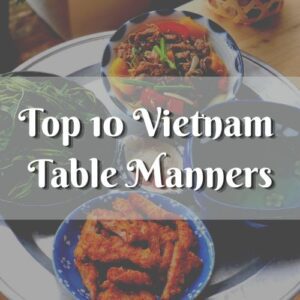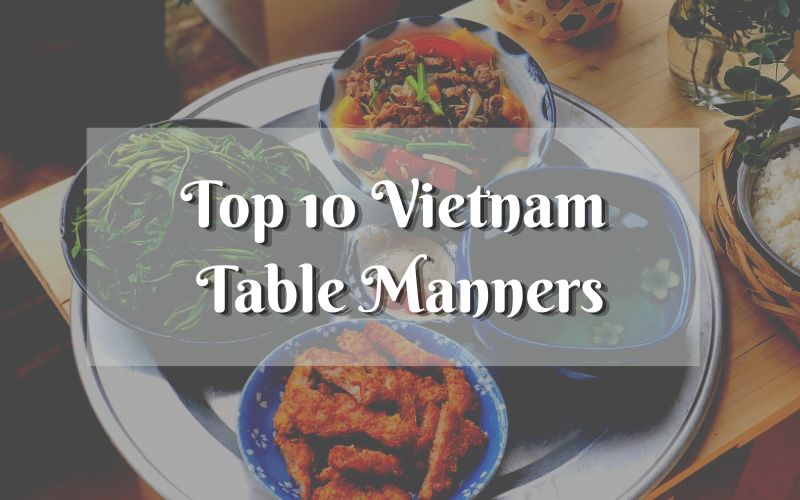
When it comes to food, Vietnamese culture has a fascinating tradition. In the past, this was the time when farmers could replenish energy and food after a long day. After work, the whole family got together for dinner and shared their day. Traditional Vietnamese cooking habits have survived modernization and industrialization as they have been passed down from generation to generation. In this article, you will learn about traditional Vietnamese cuisine as well as good Vietnam table manners for your future trip.
What is a typical Vietnamese meal?
In Vietnam, people usually eat breakfast, lunch, and dinner with coffee or tea. Breakfast dishes can be varied and often contain carbohydrates to provide enough energy for daily work, such as pho (a symbol of Vietnamese cuisine), banh mi, xoi (sticky rice), and banh cuon (Vietnamese steamed rice rolls). Due to modern busy schedules, Vietnamese usually eat lunch at a restaurant or bring their lunch box to work or school. As a result, when it comes to Vietnam table manners, dinner is the main meal that should not be skipped.
1. Rice plays an important role in most daily meals.
When traveling in Vietnam, many Westerners are surprised that every meal contains rice (cơm) or rice-based foods. Rice was our staple food, and the Wet Rice Civilization plays an important role in Vietnamese culture.
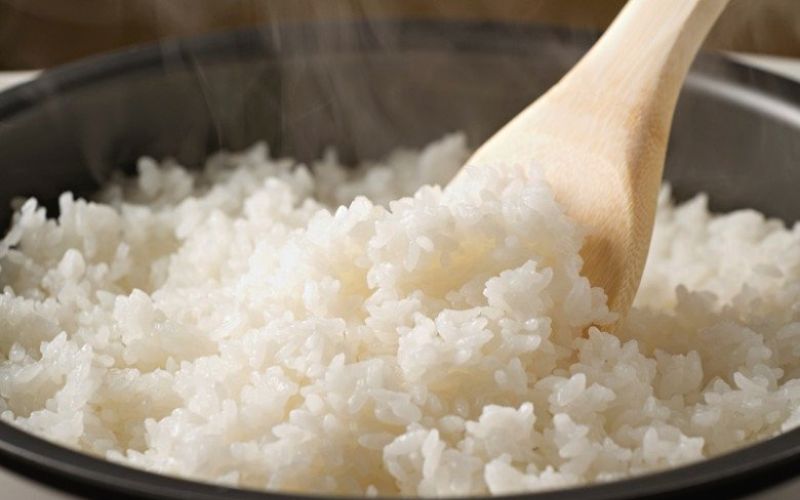
Rice – an important part in Vietnamese cuisine
“ăn cơm”, which means “to eat rice” in English, is a general term in Vietnam and does not always refer to rice but also to other foods. Don’t be confused if someone asks you “Bạn ăn cơm chưa?” (Have you ever eaten rice?) It simply means “Have you eaten?”, so you can say yes even if you had noodles or bread.
Today, rice is cooked in an electronic steamer and eaten daily with meat, fish, and vegetables. Rice is also used in various specialties such as rice paper, rice noodles, or fermented rice wine. Vietnam’s “cơm” sit-down restaurants (cơm binh dân) can be found on every street corner. During your trip to Vietnam, don’t miss any meals but take the chance to try different food!
2. Vegetables and meat or fish are accompanied
A typical Vietnamese meal may include one or two main dishes, such as stewed pork, fried fish, or boiled chicken; a dish of boiled vegetables (rau luộc) or vegetable stir-fry (rau xào) and a bowl of soup. Thanks to our tropical climate, we have a variety of vegetables in this country and they are available all year round. Some of the most popular are water spinach (rau muống), kale, chayote, and cucumbers.
3. Dishes are placed on a round tray
Vietnamese dinner has many characteristics. Some families have a dining table, while others living in rural areas dine or eat on the floor with a straw mat. Meat and vegetables are laid out on a plate, and soups and broths are placed in large bowls. Except for the bowl of rice for everyone, the only one for personal use, the other bowls or plates are shared by all family members.
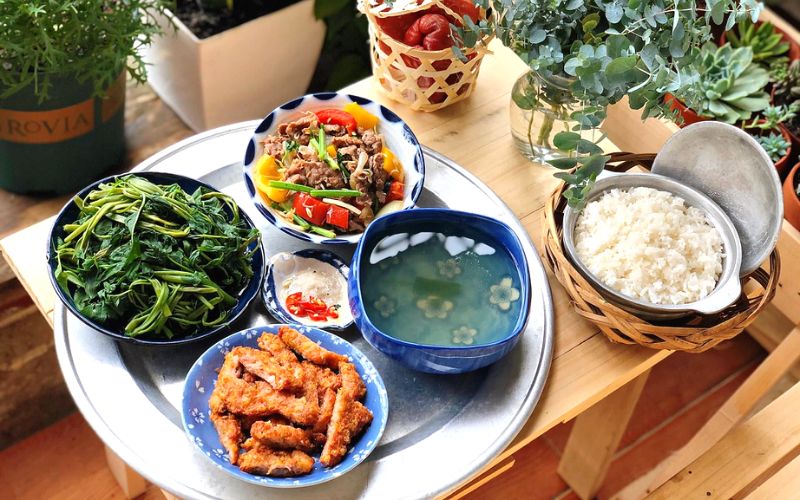
Food displayed in a round tray
All dishes are placed in a round tray. According to Vietnamese beliefs, the round shape represents happiness, integrity and unity. The rounded top allows families to sit in a circle and share information more easily. Each person has a small bowl of rice and eats it with different foods.
When you are done with a bowl of rice, ask the person sitting next to the rice cooker to fill another bowl for you. The dishes are served with chopsticks, so if you come to Vietnam, you may have the opportunity to learn how to use this utensil. The purpose of the ladle is to put the soup in a bowl. Desserts after meals include fruit (watermelon, orange, dragon fruit, etc.) and tea.
>>> Read this article to know more about Vietnamese cuisine: Top 30 Popular Vietnamese Dishes: Must-Try Vietnam Foods
4. The taste of food varies from region to region
Vietnamese gastronomy reflects geographical and cultural differences. People prefer different spices, flavors, and cooking techniques in different regions. Northerners prefer salty food, Central Vietnamese love spicy flavors, and Southerners have sweet tastes. Keep this in mind on a family trip to Vietnam in case your kids can’t eat spicy dishes.
A few good table manners to note
1. Wait for the oldest people to start the meal first
In Vietnam, people usually wait for all members to sit at the table and then start eating. They have good table manners and etiquette at mealtimes to show respect for each other. Extended families are popular in Vietnam and several generations live under the same roof. That is why it is important to show respect, care, and courtesy to older people.
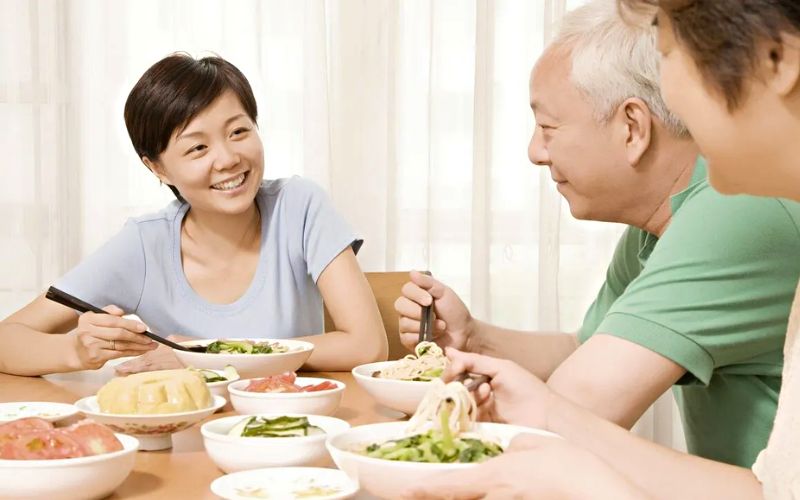
Show respect to older people in the meal
According to the Vietnamese proverb “ăn trông nồi ngồi trông hướng” (avoid “thoughtless eating” – eat and sit without thinking for others), think about your gestures and let the elderly become the first beginners.
2. Say “Mời cả nhà ăn cơm” – “Bon appétit”/”Enjoy your meal” before eating
Vietnamese always respect the hierarchy, so young people must invite all elders in order of position in the family. If someone ignores this rule or eats uninvited, it will be considered rude. Since invitation phrases are very complicated with strangers, it is acceptable that they simply say “Mời cả nhà ăn cơm” to invite the whole family in general.
3. Take and give dishes and bowls with both hands
One of the most important Vietnam table manners is to take and give the dishes and the bowl with both hands, especially to the elders. Otherwise, they will feel disrespected.
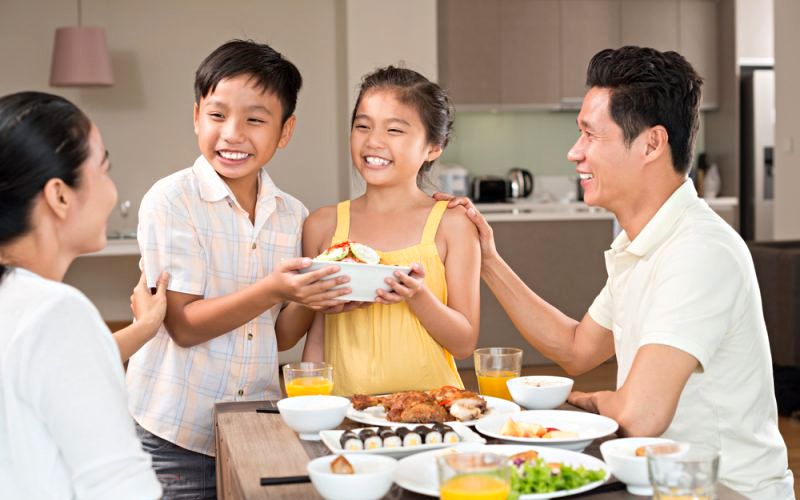
Take and give dishes with both hands
4. Don’t hit the bowl with the chopsticks
In Vietnam, there is a belief that hitting the bowl with chopsticks would summon spirits. Therefore, locals never make this gesture while eating, which they have been taught since childhood. Additionally, this action is believed to be similar to the behavior of beggars when they strike the pot with chopsticks to attract attention and receive alms. Therefore, it is considered rude and unlucky to hit the bowl with chopsticks.
5. Don’t pass food through chopsticks from person to person
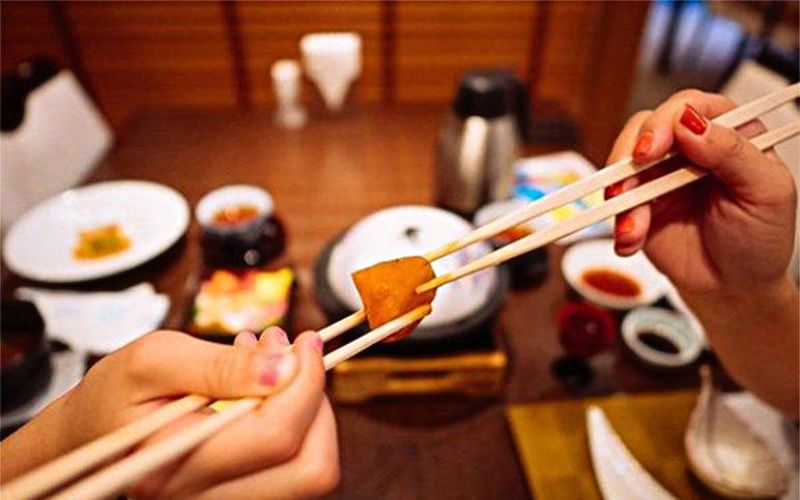
Avoid passing food through chopsticks
In Vietnamese meal etiquette, people avoid passing food between chopsticks, as they think there will be conflicts afterward. Therefore, if you want to give the food to others, you have to put it in their bowl.
6. Don’t plant the chopsticks directly in the bowl
You will be told to have bad Vietnam table manners if plant chopsticks in the bowl because the Vietnamese believe that this action is similar to putting incense in food dedicated to the dead, which brings bad luck.
7. Don’t take a lot of food at one time
Unlike the Western who have a habit of taking all the food on their plate at once and then starting to eat, the Vietnamese prepare large bowls and plates of food for all members. Each one will take one piece at a time. After eating the food in their own bowl, they take more. In Vietnamese meal etiquette, people are considered greedy if they eat a lot of food at once, so it is recommended to take the food little by little at different times of the meal.
8. Don’t rummage through food to find the favorite
Normally, everyone wants to have their favorite. However, it is considered bad table manners if you try to rummage through serving dishes. This behavior is proof of selfishness and lack of respect toward the people present at the meal.
9. Stay until the others finish eating
If you leave the table too early, people will think they don’t like food or don’t like talking to them. The advice is therefore to wait for everyone to finish eating. In an emergency, tell them about your situation and excuse yourself for going too early.
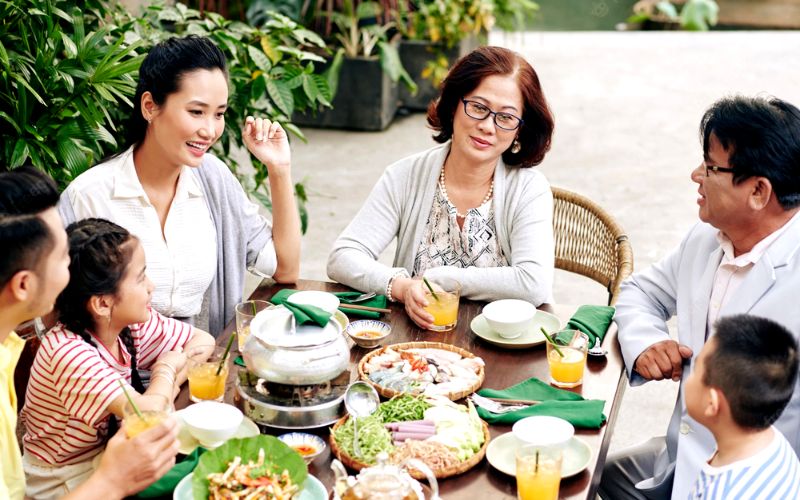
Stay until the others finish eating
10. Say “Thank you”- “Cảm ơn” to the host after the meal
Be sure to tell the host that you are satisfied with the meal for their dedication and skill. This action reflects your appreciation for the host’s efforts. The host will be grateful if he offers to help with cleaning, even if he doesn’t allow it.
The Vietnamese meal etiquette represents the traditional cultural beauty of its people who grew up and stayed for thousands of years. Learning Vietnam table manners is one of the best ways to arouse your curiosity, interest, and respect for the host country you are visiting.
Come and discover the unique culture of this fascinating country! We are always ready to help you here.
Read more:

